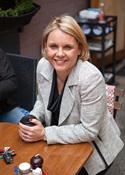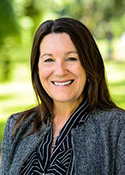Dunkley
Margin: Liberal 5.6%
Region: South-Eastern Melbourne, Victoria
Outgoing member: Bruce Billson (Liberal)
In a nutshell: Labor was narrowly unsuccessful in the outer Melbourne seat of Dunkley at its high tide in 2007 and 2010, but is hoping opportunity will knock now Bruce Billson has retired.
Candidates in ballot paper order

|
RUTH STANFIELD JEANETTE SWAIN CHRIS CREWTHER MICHAEL RATHBONE PETA MURPHY SALLY BAILLIEU LIN TREGENZA TYSON JACK JOSEPH TOSCANO TIM WILMS JEFF REANEY |
To be vacated at the election by its Liberal member of 20 years, Bruce Billson, Dunkley covers an area of bayside Melbourne about 40 kilometres from the city centre. It consists of a lower-income, Labor-leaning northern end that includes Frankston and its northern coastal neighbour Seaford, and a solidly Liberal south inclusive of Mount Eliza and Mornington, the former being conspicuous for its wealth and the latter for its preponderance of retirees. The electorate also extends inland to middle-income, marginal Langwarrin. The north-south electoral cleavage reflects a straightforward divide in incomes, the area being unremarkable in its ethnic diversity at both ends.
Dunkley was created with the enlargement of parliament in 1984, from territory that had previously been accommodated by the Melbourne hinterland seat of Flinders since federation, excepting Seaford which had been in Isaacs since 1977. It was won for Labor on debut by Robert Chynoweth, who had won Flinders for Labor at the March 1983 election, thereby cutting short Peter Reith’s brief first stint in Flinders following his by-election win the previous December. Chynoweth was re-elected with a small swing in 1987, then gained a 3.9% boost when the electorate traded Mornington in the south for Chelsea in the north in a redistribution. However, this proved insufficient to hold back a tide that costs Labor nine Victorian seats at the 1990 election, with Liberal candidate Frank Ford gaining the seat off a 6.8% swing. Chynoweth ran again in 1993 and emerged a surprise winner, securing a 0.6% margin after a 1.9% swing. His hopes for another term was effectively dashed when the next redistribution effectively undid the last, leaving him to defend a negative margin at a losing election in 1996.
Dunkley has since been held for the Liberals by Bruce Billson, who by the 2004 election had built enough of a buffer to survive swings to Labor of 5.3% in 2007 and 3.0% in 2010, followed by a 4.5% shift in his favour in 2013. Billson held the cabinet post of Small Business Minister from the 2013 election victory until Malcolm Turnbull’s leadership coup in September 2015, in which he was public in his support for Tony Abbott, despite being generally regarded as an ideological moderate. Turnbull then sought to demote Billson to the outer ministry position of Minister for Cities and the Built Environment to make way in small business for Kelly O’Dwyer, attracting criticism from small business groups who held him in high regard. He instead chose to go to the back bench, and announced his intention to retire two months later.
The Liberal preselection to replace Billson was won by Chris Crewther, a Frankston-based business consultant who ran unsuccessfully for the Liberals in the rural seat of Mallee in 2013 upon the retirement of Nationals member John Forrest. Crewther prevailed in the final round of the preselection vote over Donna Bauer, who held the state seat of Carrum for the Liberals from 2010 to 2014. Labor’s candidate is Peta Murphy, a barrister and former legal aid advocate and policy adviser to Labor front-bencher Duncan Kerr.
 A report by Rick Wallace of The Australian in the first week of the campaign talked up Labor’s prospects in Dunkley, with Labor sources claiming “one recent sample of a tracking poll in the southeast Melbourne seat had the ALP in front 52-48 per cent after preferences” – although this may have been from a sample as few as 200. Nonetheless, the Prime Minister was taking the seat seriously enough to have made a campaign visit at around the same time.
A report by Rick Wallace of The Australian in the first week of the campaign talked up Labor’s prospects in Dunkley, with Labor sources claiming “one recent sample of a tracking poll in the southeast Melbourne seat had the ALP in front 52-48 per cent after preferences” – although this may have been from a sample as few as 200. Nonetheless, the Prime Minister was taking the seat seriously enough to have made a campaign visit at around the same time.
Analysis by William Bowe. Read William’s blog, The Poll Bludger.


